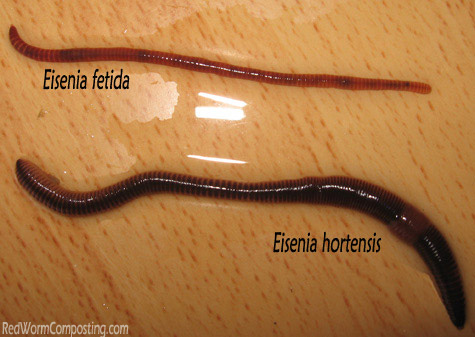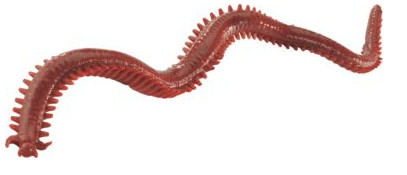A Biased View of Where To Find Red Wigglers
A Biased View of Where To Find Red Wigglers
Blog Article
Where To Find Red Wigglers Fundamentals Explained
Table of ContentsSome Ideas on Where To Find Red Wigglers You Should KnowGetting The Where To Find Red Wigglers To Work5 Easy Facts About Where To Find Red Wigglers ShownNot known Facts About Where To Find Red WigglersThe Best Strategy To Use For Where To Find Red WigglersThe smart Trick of Where To Find Red Wigglers That Nobody is Discussing
For finest outcomes, you want to fire for regarding 60-70% dampness level. At the ideal dampness levels which is simply under 70% that handful need to hardly yield one decline of fluid.
The Indian Blue is starved, however additionally likes a warmer environment and it also exhibits a tendency to run away the bin. The red wiggler is a hardy worm and isn't as choosy regarding its environment. I like to call it the Ford Taurus of vermicomposting worms; you will not brag to your hardcore composting friends that you possess them, yet they will offer you well.
As Faucet demonstrated, a fishermen can do a good offer to make a worm more attractive.
The Of Where To Find Red Wigglers
I think you will as well if you attempt them. The smaller the trout stream, the better worms job is an axiom that hasn't transformed in the 100-plus years given that Perry wrote his post. Anglers of his era merely stuck their rickety fishing pole with alder tangles and went down a weighted worm right into a deep opening.
Morning is prime feeding time, and the weightless bait's sluggish descent leaves 5 inches of squirming healthy protein in complete view for fairly a while. After you have actually made the actors, maintain the bond open and put the rod in a forked stick. The line will diminish the rod in slow loopholes as the worm settles, however typically the sluggish loops will certainly end up being a blur, and the morning will instantly obtain rather intriguing.
I generally use an entire 'crawler, favor marabou clothing, and go down the pole for 2 or 3 seconds when I get a hit.
If it's there, set the hook with a sweep rather than a jerk. As soon as in a while you'll locate yourself hooked to those slow, passionate tugs, and feel the weight of a great walleye.
Rumored Buzz on Where To Find Red Wigglers
When the hefty walleyes proceed to the big-water shoals in the late summer season, attempt going after them with a bucktail jig and a 1-inch pinch of nightcrawler. The lure covers the hook factor, disperses weeds, and offers a taste of prey. With nothing dangling or flapping, it stays secure despite existing, casts, or ambitious panfish.
Whether you're wading or angling from a watercraft, wandering worms is among the wonderful browsing methods for larger rivers. For trout, a spade-dug, 4-inch garden worm is the right my response size; for bass, walleyes, and steelhead, a nightcrawler might be a far better option. The key is to drift the bait with feeding and holding locations due to the fact that fish in present are not going to ferret out the bait, as they could in still water.
Fish the shifts: mouths of tributaries, bank-side slicks, and the edges of large pools. His adage applies to any number of angling maneuvers, consisting of the matter of including an item of worm to a damp fly.

The Facts About Where To Find Red Wigglers Revealed
Include a few hundred worms and feed them 2 times a week. Keep the bedding wet but not damp. On the menu: lettuce, fruit and vegetable waste, and the periodic nongreasy leftover.
Simply like veggie scraps, you can take your used coffee premises and add them to a worm box. Worms like consuming coffee premises.
When the hefty walleyes go on to the big-water shoals in the late summer, attempt going her response after them with a bucktail jig and a 1-inch pinch of nightcrawler. The bait covers the hook point, disperses weeds, and offers a preference of victim. With absolutely nothing dangling or waving, it stays protected despite current, casts, or enthusiastic panfish.
The Buzz on Where To Find Red Wigglers
Whether you're wading or angling from a watercraft, wandering worms is among the fantastic searching approaches for bigger rivers. Where To Find Red Wigglers. For trout, a spade-dug, 4-inch garden worm is the appropriate size; for bass, walleyes, and steelhead, a nightcrawler might be a better selection. The trick is to wander the bait via feeding and holding areas since fish in current are not going to chase down the bait, as they may in still water
Fish the shifts: mouths of tributaries, bank-side slicks, and the sides of big swimming pools. His click over here now dictum uses to any number of angling maneuvers, consisting of the matter of including a piece of worm to a wet fly.
However raising your own bait indicates you can slip out of your house and struck the pond before Mother comes homejust like in the old days. Below's just how to keep a worm box: Cut a sheet of CDX-grade plywood, which is made with water-resistant adhesives, to your measurements. Toenail it with each other and pierce a dozen 12-inch openings in the bottom for drainage.
An Unbiased View of Where To Find Red Wigglers
Load it with shredded newspaper, leaves, peat moss, and dirt. Moisten lightly. Cover and allow sit for a week. Add a couple of hundred worms and feed them two times a week. Keep the bedding wet yet not wet. On the food selection: lettuce, fruit and vegetable waste, and the occasional nongreasy extra.
Just like veggie scraps, you can take your used coffee grounds and add them to a worm box. Worms enjoy consuming coffee grounds. With the best conditions and damp, healthy dirt, worms can live in a container of dust for around three weeks. Shop out of direct sunshine and keep at a temperature level in between 50 and 80 levels.
Report this page